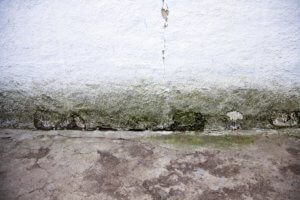
Concrete Slab Foundation: Is It Ideal for Your Home?
A concrete slab foundation is one of the most common and simplest forms of foundation for many homeowners. It’s easy to pour, sturdy, and knowing
Do you have dampness and don’t want them to spread all over the walls and ceilings of your house? Before finding solutions to dampness you need to know which are the 3 types of damp that can appear in your home.
This kind of damp is characterized by the climbing from the foundations to the walls and interior walls by the phenomenon of capillarity (or capillary rises) which different materials have such as bricks and concrete blocks. All this water will make the paint and other coatings peel, even if they are damp-proof.
If not controlled in time, it can destabilize the foundations of your home or building and create a risk for the entire building and the people who inhabit it. In addition to this, as there is more damp in the environment, paint will keep peeling and you will spend more money on heating.
We got the cure: rising damp treatment!
It is one of the most common causes produced by our daily activities such as cooking, showering or ironing. This added to the lack of ventilation produces condensation and mold on the walls and ceilings.
As if this were not enough, with the excess of environmental humidity there will proliferate mites and fungi. So if you are allergic or have a related disease you need to remove moisture immediately.
This type of indoor dampness is common in places below ground level such as garages, basements, cellars or any other kind of underground room. On this occasion the damp comes from the water present in the side walls, where it infiltrates into the interior.
Like all other causes, this kind of damp seriously compromises the stability and safety of the building and electrical installations.

A concrete slab foundation is one of the most common and simplest forms of foundation for many homeowners. It’s easy to pour, sturdy, and knowing

Your home is your sanctuary. It’s where you feel the most comfortable and it’s a place where you can rest after a long day. Imagine

Basements are versatile spaces. You can use them as storage or lounging— it all depends on your preference. Either way, they’re vulnerable to flooding and
The important step to eliminate the dampness is a correct diagnosis by analyzing the origin of the dampness. Below we will list the most common effects in order to detect them in time:
If you still don’t know what kind of humidity you have, we recommend you go to a company specialized in detecting and eliminating it.
Today there are many companies that specialize in the damp treatment. We have carried out a detailed study with the best anti-damp companies in Spain, in which we have taken into account their effectiveness, professionalism, price and speed.
In any case, a moisture repair company is the best option if you want to eliminate the problem at its source.
The origins of damp are always the same and most of the time they are related. That is why many times when trying to solve a problem we aggravate another one by making the situation worse. The most common false solutions are:
The best thing you can do is to keep the affected area well ventilated, while controlling the more problematic areas with room dehumidifiers.